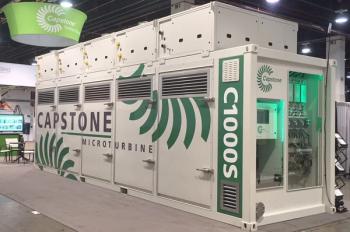
Selection of O-rings
Below are excerpts from the paper titled, 'Explosive Decompression and other O-Ring Related Issues for Turbomachinery Service - Some User Guidance' presented by Christopher John Carmody and Timothy B. Kaminske at the 44th Turbomachinery & 31st Pump Users Symposia held at Houston, Texas from September 14-17, 2015.
O-rings are probably the most common elastomeric sealing device. They are devices that comprise of a circular cross section that is formed or molded in the shape of a ring or toroid. Several standards exist relating to the sizes of O-rings. These tend to have a set number of sizes for the cross sectional rings together with a series of inside diameters spanning between lower and upper limits.
(O-rings. Photo: sandiegoseal.com)
Explosive decompression (ED) occurs to elastomers when gases are absorbed into the material through pressure and is retained within the material until the system is depressurized. The retained gases then expand rapidly causing blistering and mechanical damage to the material. The extent to which this damage occurs is dependent upon a number of factors, such as the sealed pressure, the decompression rate, the gas itself, and the properties of the material.
Explosive decompression, also known as rapid gas decompression (RGD) is largely related to the materials’ tear strength. This dictates the materials ability to resist cracks from regions that are highly stressed during the decompression process. The pockets of trapped gas induce stress within the material void, which is essentially a stress riser. The applied pressure tends to put the material into tension which causes tearing to occur.
Elastomers with high tensile strength, high tear strength and high modulus tend to resist such damage more readily than the so-called lesser materials. It should however, be pointed out that the high strength characteristics are at the expense of flexibility and resilience.).
Explosive decompression is probably the most important material characteristic when specifying elastomers for high pressure gas duty, therefore many individual oil and gas related organizations have developed their own ED assessment and test procedures.
Test data and material properties need to be taken into consideration in order to identify the optimum elastomeric seal material for a given duty. Make sure that the full gas composition is known (together with any variations). Identify all known operating conditions and not just minimums/maximums. Make sure that pressure and temperatures are correctly paired for cyclic duties. At elevated temperatures the elastic strength of elastomers is significantly reduced and at sub-zero temperatures elastomers are brittle.
How much specific property/test data is available for the exact material grades under consideration is there. Explosive decompression potential becomes significant for service pressures of about 40bar (580 psi) or higher. If explosive decompression is suspected then an assessment should be made to determine under what conditions and at what rate the sealed system can decompress. In conditions where pressure differential is high, damage can occur to elastomer seals after just one single decompression cycle.
Actual seal failure is most likely to become evident following start-up after the damaging system depressurization. Therefore, it is vital to monitor these machines carefully on each start-up to look for anomalies that could indicate a seal failure. Many high-pressure and temperature applications are sealed with O-rings and other similar elastomeric seals. With proper design, operation and preventative maintenance ED can be avoided resulting in highly reliable profitable machinery.
Christopher John Carmody is Special Products Manager, AESSEAL plc Rotherham, United Kingdom. Chris began his career as a maintenance engineer and obtained a first class honors degree in Mechanical Engineering, a Master of Science in Structural Integrity and a Doctorate in Fluid Structure Interaction of Bioprosthetic Heart Valves. Chris joined AESSEAL as a technical manager involved in the design of mechanical seals and many of AESSEAL's other products.
Timothy B. Kaminske is Product Design Engineer, Dresser-Rand Company, Olean, New York. In 2013, Tim Graduated from the Pennsylvania State University with a B.S. in Mechanical Engineering. Currently Tim works on the design, manufacture and testing of Dresser-Rand centrifugal compressors in the new unit group.
Newsletter
Power your knowledge with the latest in turbine technology, engineering advances, and energy solutions—subscribe to Turbomachinery International today.





